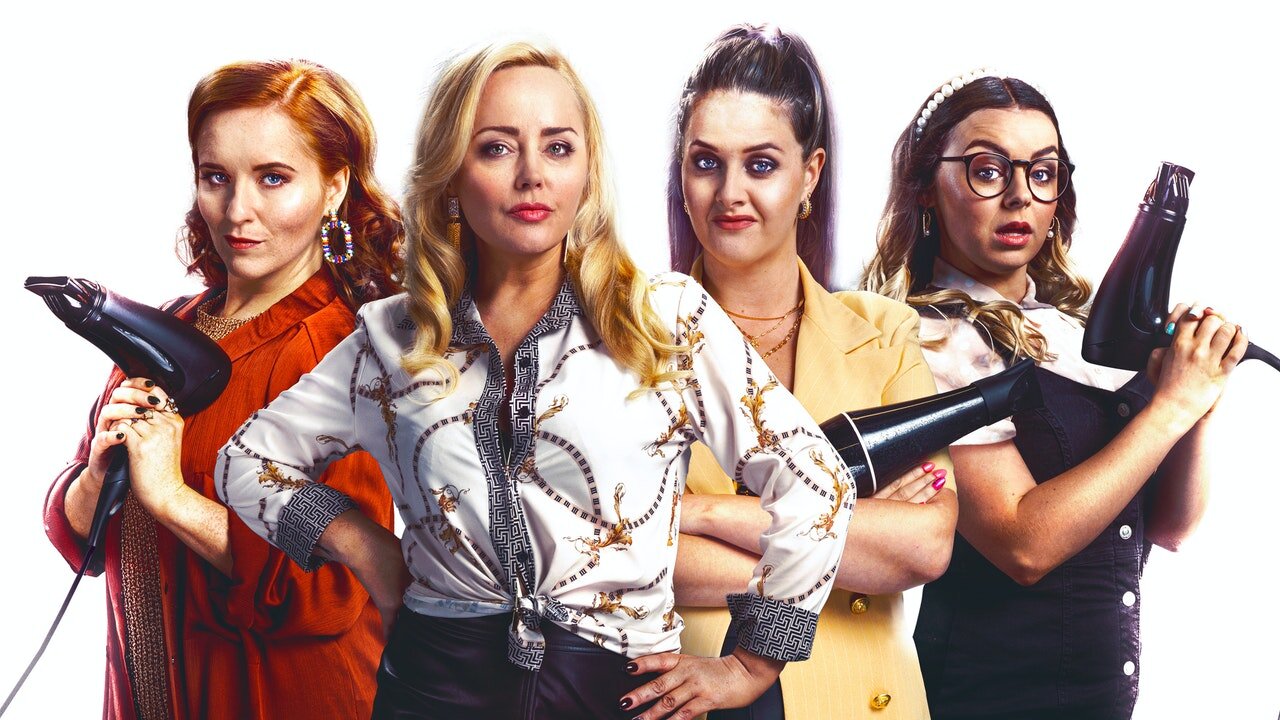SIFF 2021 | "Deadly Cuts" All Too Formulaic Behind the Blade
6/12 ForReel Score | 2.5/5 Stars
“[S]tyle, wit, and occasional murderous urges” – this is what characterizes every “young one” in Dublin according to Irish writer and director Rachel Carrey. Her feature film debut, the cherry Coke-flavoured comedy Deadly Cuts, re-presents this Dubliner with vibrant streaks and voluptuous curls, telling the story of four hairdressers fighting to keep their salon afloat by whatever means necessary in a fictional microcosm of the Greater Dublin Area. It is a film that strikes with punchy dialogue and colourfully coiffured characters, but under-utilized plot threads dull its sharpness in the end.
Angeline Ball as Michelle leads Stacey (Ericka Roe), Shelley (Pauline McLynn), and Chantelle (Shauna Higgins) at the Deadly Cuts salon, a woman’s one shot at finding an ounce of flair in her ramshackle fictional town of Piglinstown. When a local gang begins to tighten its grip on the area and a town councillor’s plans for rezoning come to the fore, the hairstylists look to the “Ahh Hair” competition to bolster their image, keep their business afloat, and keep their community in the hands of the townspeople. A deadly encounter with the gang’s leader, Deano (Ian Lloyd Anderson), both reinvigorates the ladies’ mission and puts them under added threat.
Carrey sets the stage in Deadly Cuts for cheeky ensemble antics and a rigorous lampooning of small town tropes, and to this extent her film is a riotous good time. Her dialogue is whip-smart, and almost every actor involved delivers it with acid-tinged, angular precision. The four leads play off each other like they’ve been caterwauling back and forth at each other in a salon for years, and the entire film is peppered with quirky, costumed caricatures that make the fictional Piglinstown feel lived-in, even if the film does narrow its scope to a single block of the city. There are elements at play in Deadly Cuts that suggest Carrey is capable of an Edgar Wright-level discombobulating of an Anglo-Celtic countryside. Even the editing takes on a “Wrightian” energy with its flashy interplay between whip-pans and insert shots and its adherence to the soundtrack.
But whereas Wright’s films like Hot Fuzz juggle the ice cream and the blood in equal measures in a way that is dazzling throughout, Deadly Cuts ends up dropping its darker aspects in favour of a by-the-numbers, “save the community centre” underdog comedy akin to 2001’s Blow Dry. In Blow Dry, fashion-obsessed salon culture is exaggerated to the degree of camp, but the film is never able to overcome its boring characters and its thin story about a competition and nothing more. Deadly Cuts is an upgrade in terms of its characters, and its vigilantism and #yesallmen revenge angle carries potential, but these angles are never developed to the extent whereby they become all that relevant to the film’s so-called agenda. In fact, the “deadly” encounter that supposedly sets events in motion is all but forgotten later; swept under the rug until in the film’s climax, when it is clumsily tossed back into the fore to make for some last-minute action.
These oversights would be okay if light comedic fare was the only aim, but when a dark comedy with a poster featuring women brandishing blow dryers like guns is what’s marketed, the viewer is going to be left wondering where the film’s venomous feminism goes to by the film’s halfway point. Deadly Cuts is a hairdressing competition comedy with a bloody twist, but this twist isn’t woven throughout enough of the film to highlight anything beyond the formulaic story being spun. That said, the comedy is at least consistent, and Carrey shows a playful approach to her filmmaking that should be exciting to watch in subsequent projects. Wildcard Distribution has picked up Deadly Cuts for theatrical releases in Ireland and the UK this summer, and the film will undoubtedly find more favour in these markets.


